Affiliate links on Android Authority may earn us a commission. Learn more.
ASUS ROG Phone vs Razer Phone 2 vs Xiaomi Black Shark: Gaming smartphone deathmatch
December 12, 2018
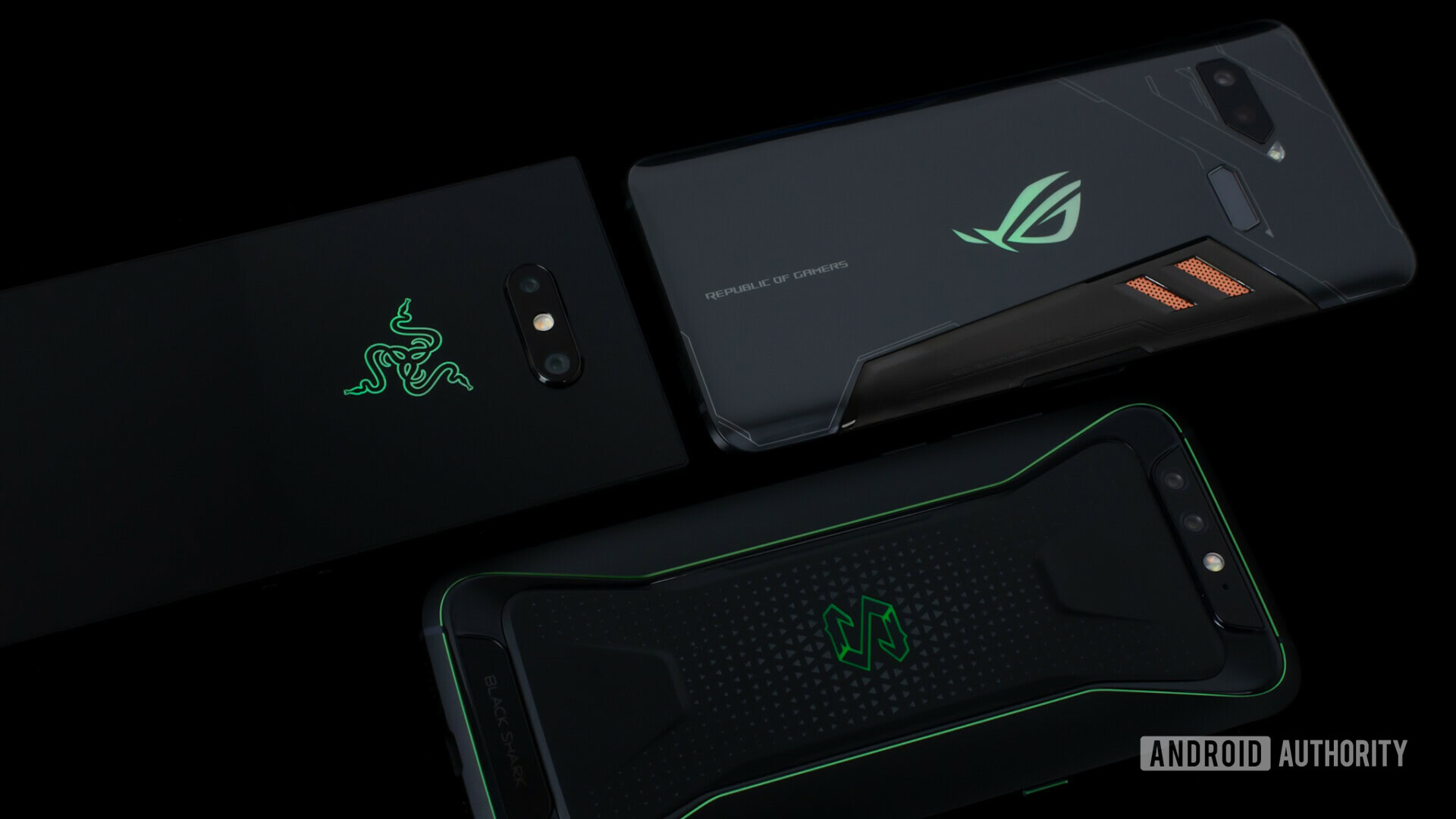
We have seen gaming phones come and go, but in 2018 competition got fiercer than ever. The ASUS ROG Phone, Razer Phone 2, and Xiaomi Black Shark lead the race to your pocket. They also want to get to your wallet, so you must find out which gaming handset offers the best bang for your buck.
This is not simply a spec battle — gaming is a sensory experience. Picture and audio quality are huge factors, as is battery life. Performance is of course important, but a gamer needs a device that can really be pushed to its limits. Not to mention there is always a need for gaining that competitive edge.
This is not simply a spec battle. Gaming is a sensory experience. Edgar Cervantes
In this post we aim to decode the equation for the ideal gaming device and see which of these three contenders gets the closest to it. Let’s jump right in and find out!
Design & build quality
ASUS ROG Phone
The ASUS ROG Phone looks bold and futuristic, with a functional aerodynamic look.Edgar Cervantes
The ASUS ROG Phone takes many design cues from its gaming brand. It looks bold and futuristic, with a functional aerodynamic look. Air actually flows through it, making this the first air-cooled smartphone on the market. This is made obvious by the dual copper grills. The same metal is found inside and easily dissipates heat.
If the design itself doesn’t catch your eye, the RGB light-up ROG logo and the words “Republic of Gamers” will. The front has a more clean slate look, save for the thin copper-colored grills housing the front-facing speakers.
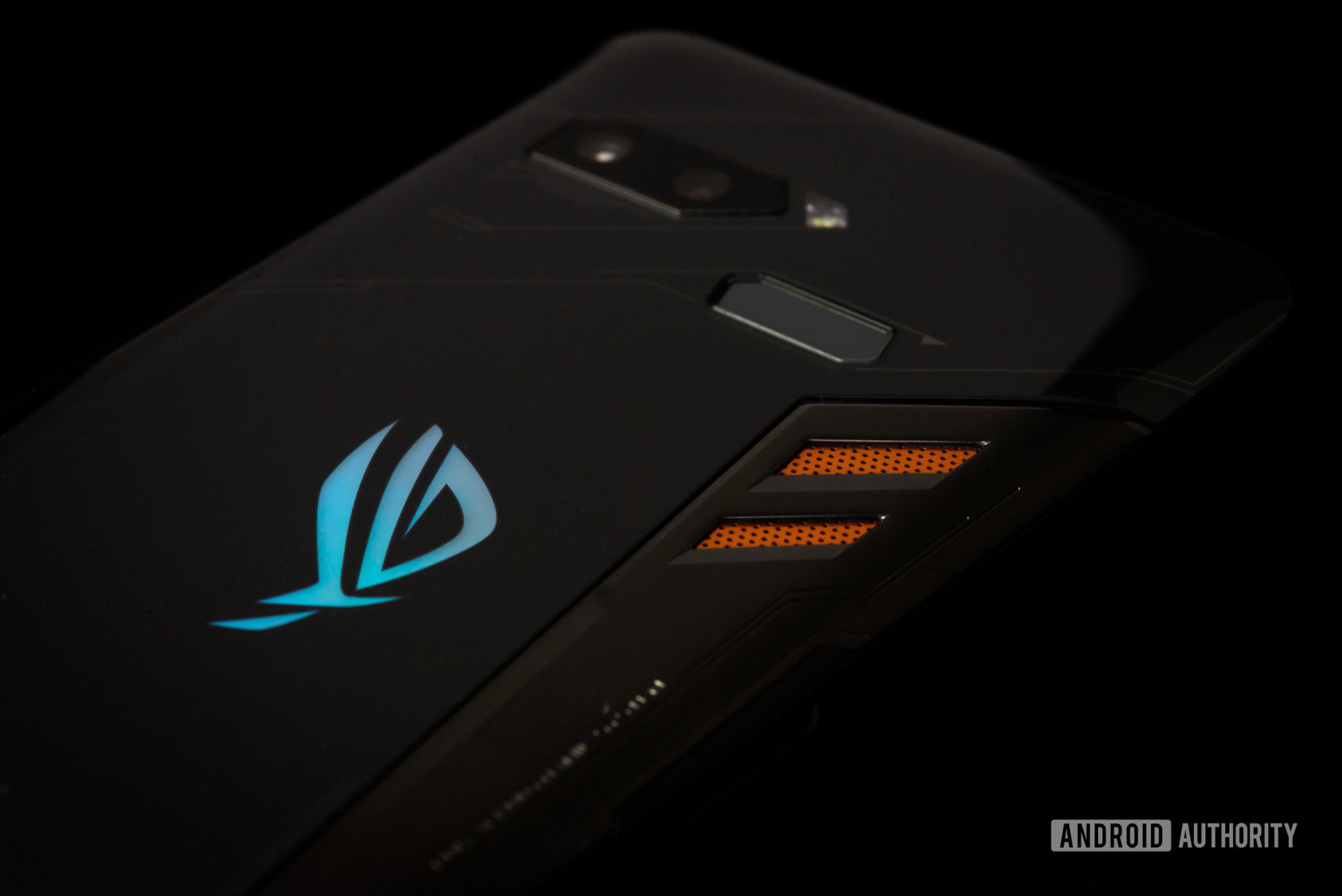
Aside from the air ventilation, the most interesting features in the design will be found along the edges. The phone has a secondary power port along the left side, which serves as a docking connection for its many accessory options.
It was a bit odd playing with the ASUS ROG Phone AirTriggers.
The right side of the phone sports what ASUS calls Air Triggers. You won’t see these at first glance, but they are hidden in both sides and serve as pressure-sensitive trigger options.
I will say it was a bit odd playing with these, as the only tactile feedback you get when using them is a vibration. These buttons can be programmed with the phone’s software, by selecting an area of the screen each button can virtually tap on when activated.
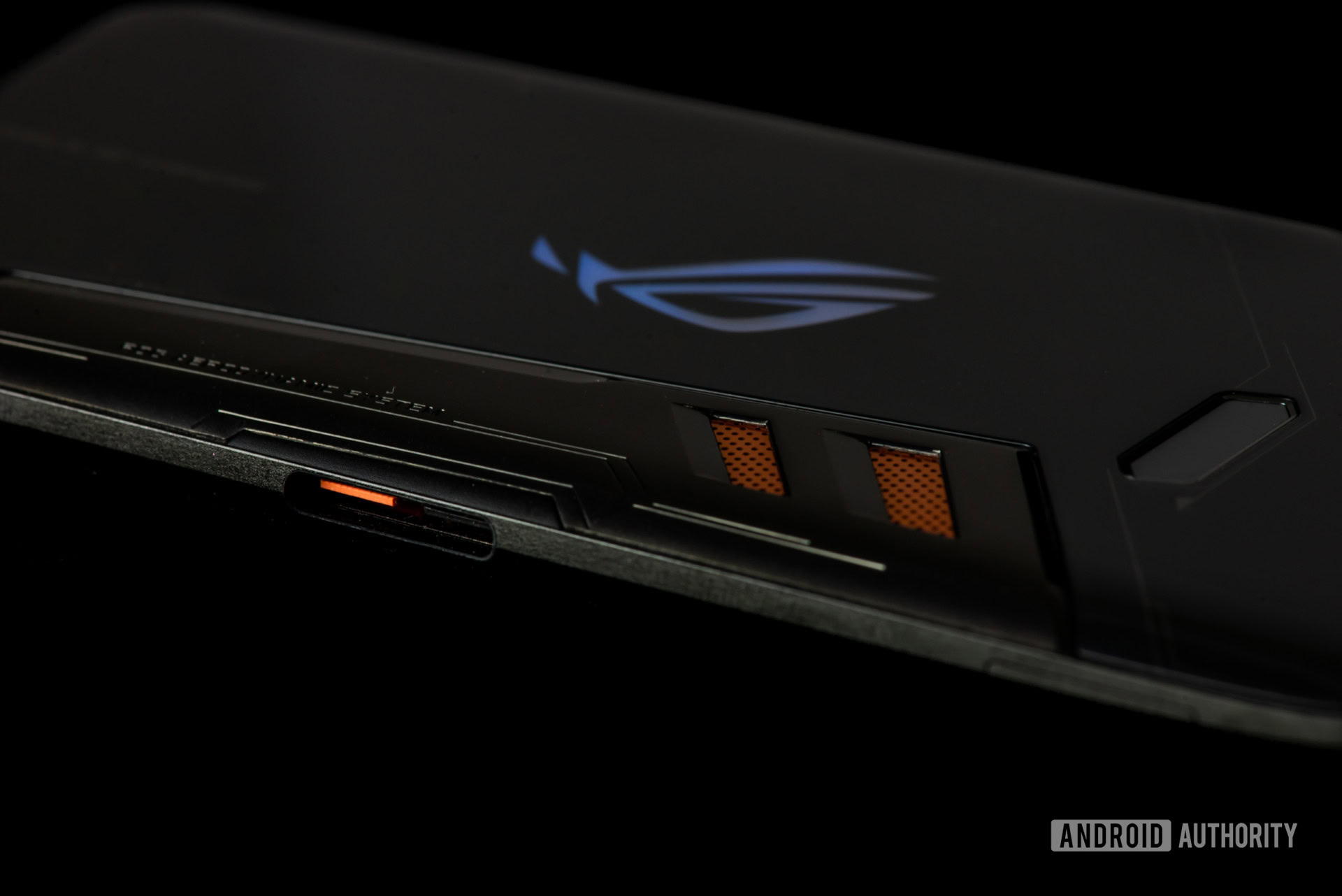
I often found myself missing the pressure sensitive area, but overall they improved my gaming experience substantially, especially when playing racing or FPS games.
As for build quality, I would say ASUS has done a pretty good job here. The phone doesn’t feel finicky, despite all the elements they have added to it. It also doesn’t feel like the most premium device out there, though, as it is mostly made of plastic and glass. The glass parts do attract fingerprints.
Razer Phone 2
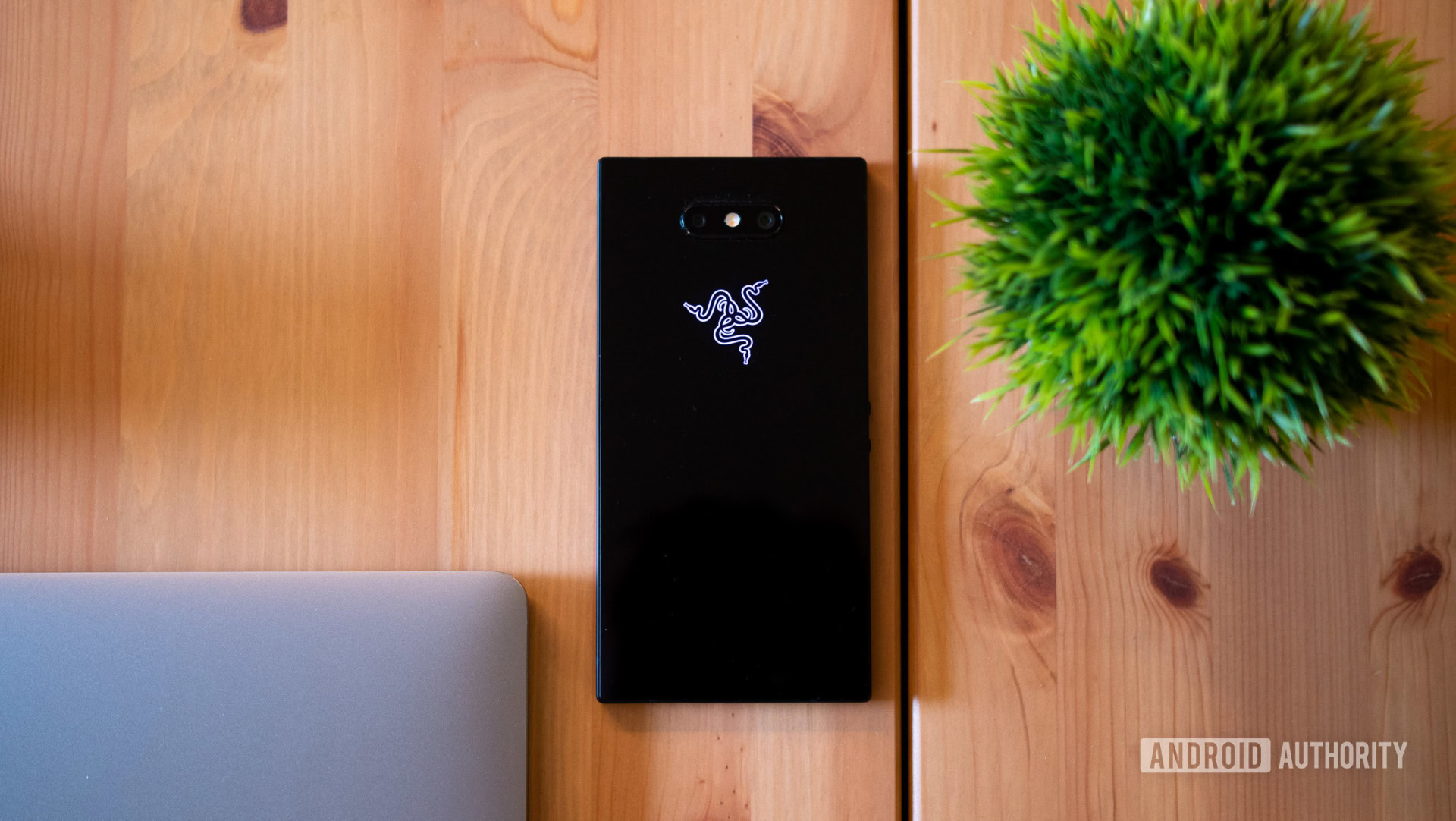
Razer went for a little more traditional design. There’s glass on the back and front, with plastic outlining the edges and bezels. It would be a shiny black slate if it wasn’t for the huge light-up Razer logo in the back. The phone is clean and simple, but the logo is loud and showcases the device’s gaming nature.
The Razer Phone 2 is clean and simple, but the logo is loud and showcases the device's gaming nature.Edgar Cervantes
The Razer Phone 2 is also by far the worse fingerprint magnet in this competition, so be ready to wipe it often or live with a smudgy phone. Since it’s glass, the device is also quite dangerous for those of us with slippery fingers.
Xiaomi Black Shark
From the front, the Xiaomi Black Shark looks like many other devices we have seen in the past. It has a clean slate look with thick bezels along the top and bottom. The lower side houses a fingerprint reader and hidden capacitive buttons.
Truth be told is I didn't feel Xiaomi's liquid cooling worked very well.Edgar Cervantes
Start turning it and you will notice the bright green metal edge, which also outlines the power button and lines up the back. The back features an industrial design that has become synonymous with gaming. Xiaomi uses different shades of plastic, glass, and a textured design to accentuate the Black Shark’s unique look. Of course, the logo also lights up.
The Xiaomi Black Shark is very unique in that it is the first to use liquid cooling. Truth be told is I didn’t feel it worked very well. This phone got the hottest out of the three devices.
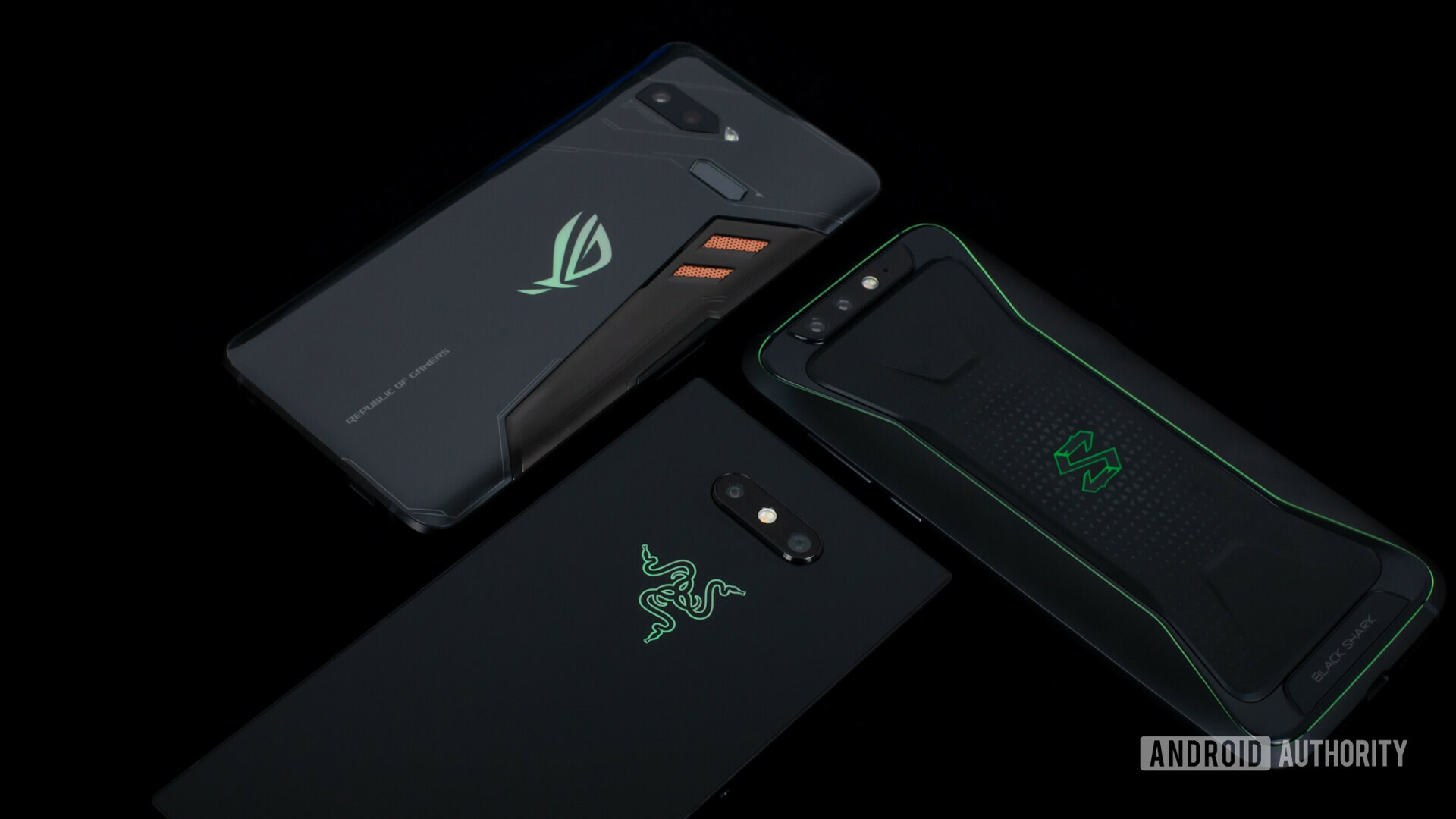
Winner
Design: ASUS ROG Phone
In terms of design, the ASUS ROG Phone looks the most unique and also happens to be the most functional. Elements like the Air Triggers, secondary landscape power port, and air cooling make it unbeatable in this department. Those are not only design elements, but things gamers can use to improve the experience.
Build quality: Xiaomi Black Shark
The Xiaomi Black Shark is mostly made of plastic, but it feels the most solid of the three. It is also the least slippery one, which helps when pulling those hardcore gaming moves.
The Xiaomi Black Shark is mostly made of plastic, but it feels the most solid.Edgar Cervantes
Accessories
A phone’s shape is not made for gaming. These devices have a primary function as a smartphone and need some help to become the ultimate gaming machine. Gamepads and other products will make a huge difference.
ASUS ROG Phone
ASUS went nuts with accessories.Edgar Cervantes
ASUS went nuts with accessories. The unit comes with an active cooling accessory that mounts to the back of the phone. I has a light-up ROG logo and connections to USB Type-C and 3.5mm headphone jack. Then there is a case that supports the mounting of this cooling device. The GameVice controller offers physical buttons. The TwinView dock has a secondary screen, active cooling, and shoulder triggers.
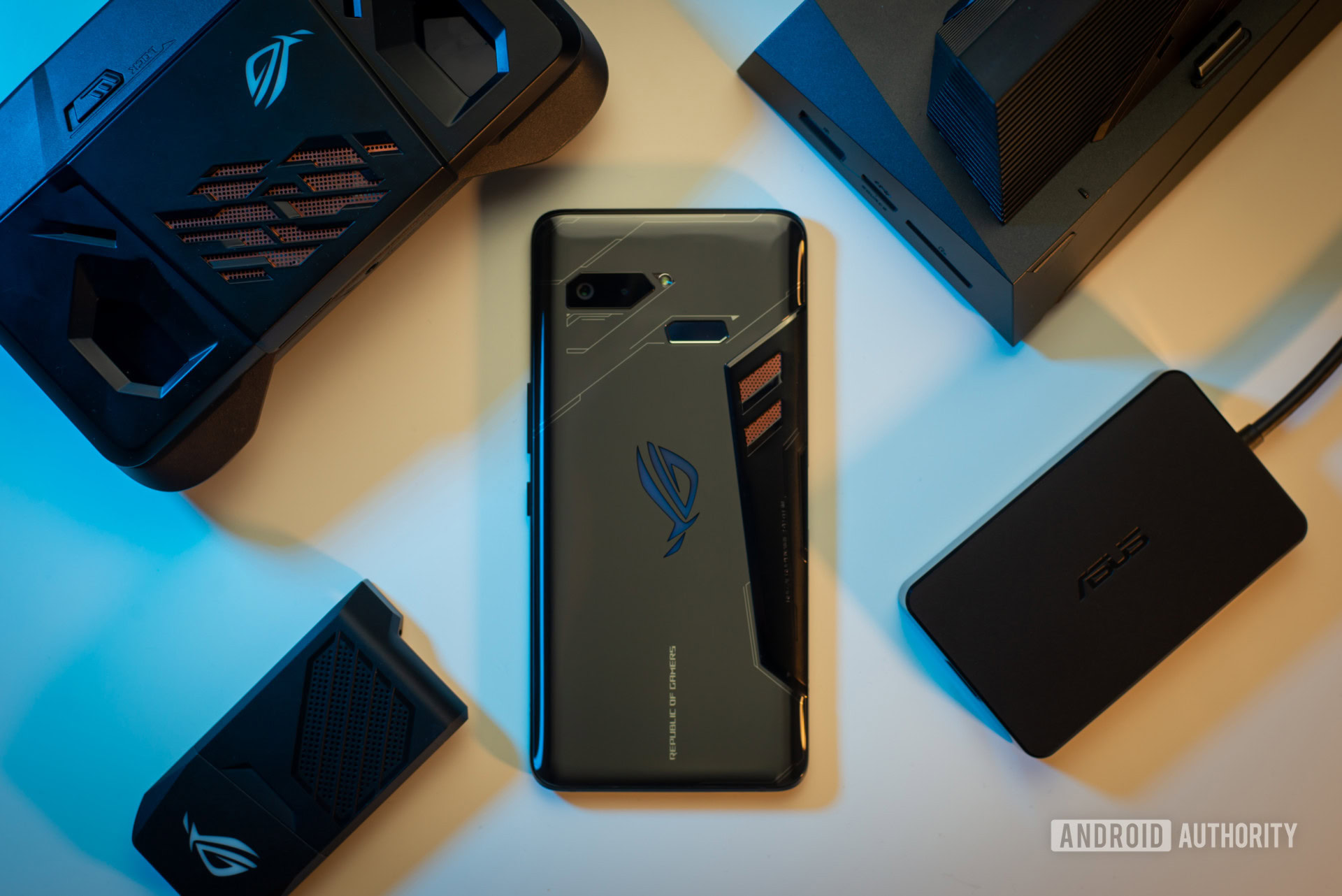
There is also a variety of stationary docks. The most basic is the Professional Dock, which an HDMI, two USB 3.1, one USB Type-C, and a Gigabit Ethernet port. The Mobile Desktop Dock can be hooked to dual monitors. Those who want to go cordless can use the ASUS WiGig Dock to wirelessly stream to any screen.
Razer Phone 2
No accessories to look at here, unless you get excited about cases, screen protectors, and cables.
Xiaomi Black Shark
The Xiaomi Black Shark features a controller accessory that attaches to the left side of the phone provides a joystick, as well as a left trigger button. You can also get specialized headphones for it.
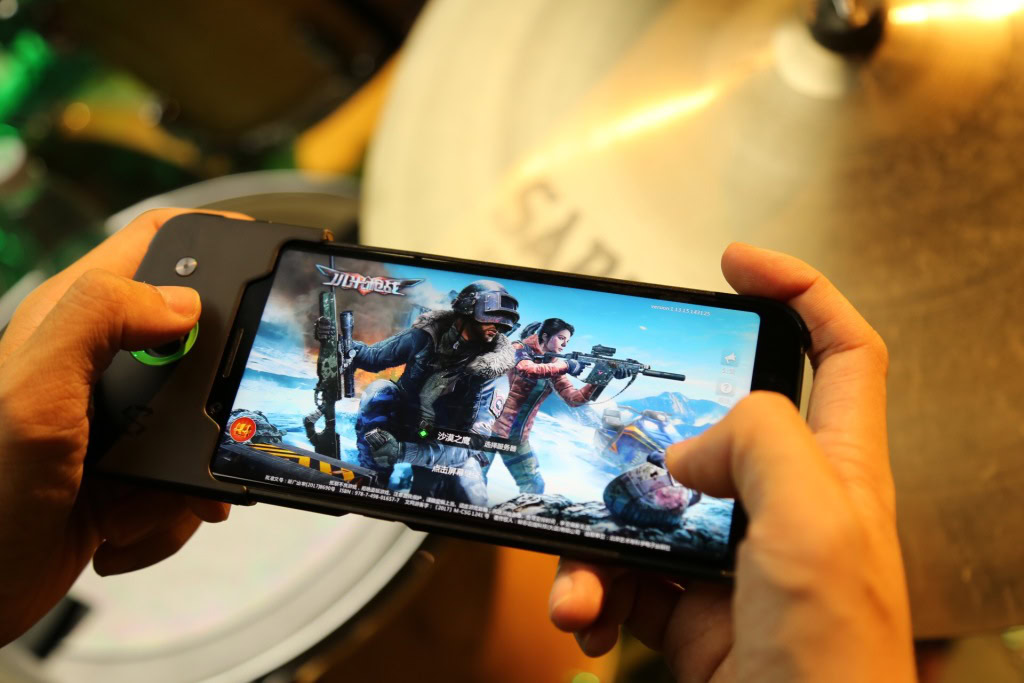
Winner: ASUS ROG Phone
This was an obvious one, right? ASUS has more options for keeping the device cool, comfortable ergonomics, and even upgrades. You can use a pro keyboard, mouse, and display (or two) if you choose to do so.
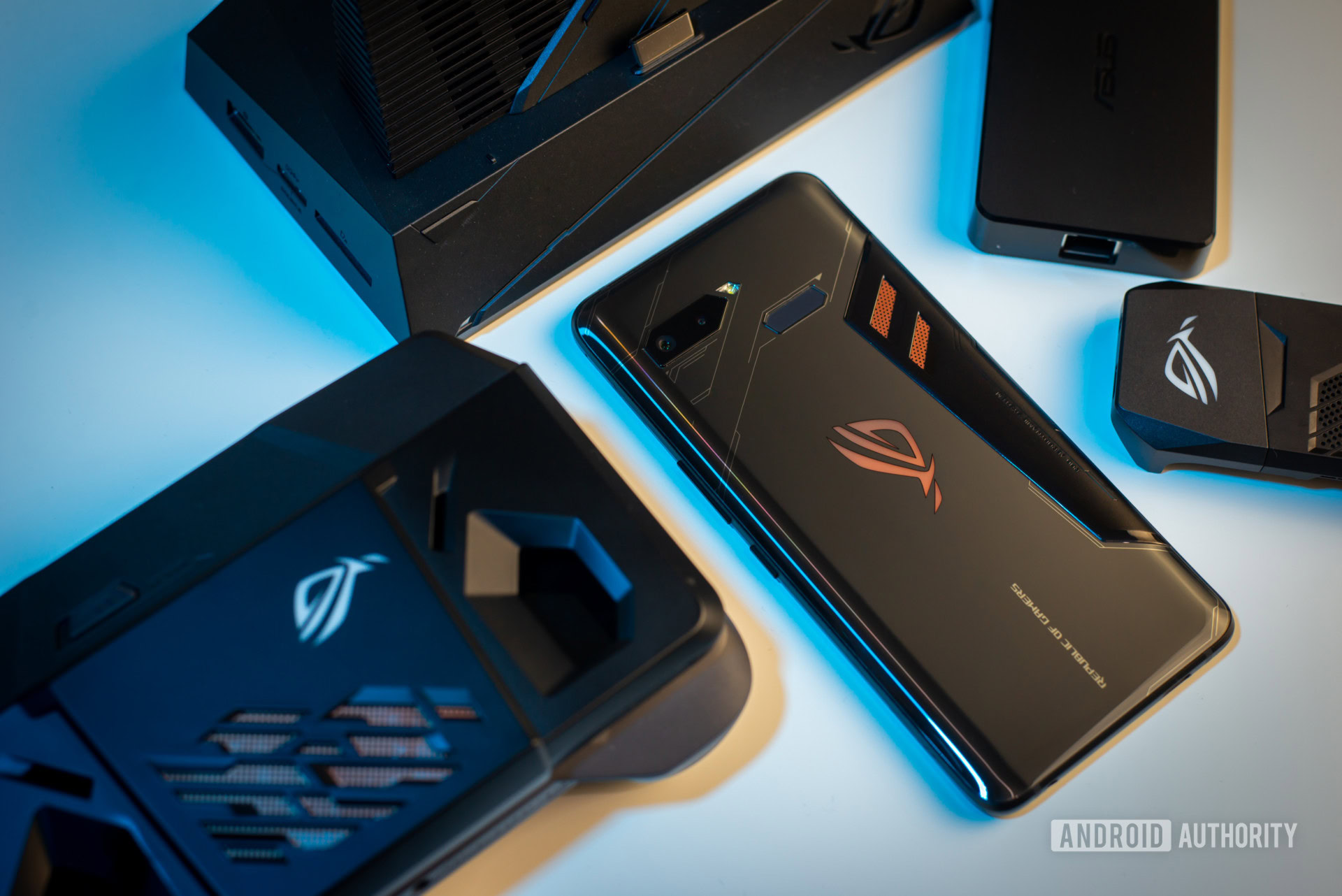
Performance
What would gaming be without good specs? These are important, but all three phones essentially have the same hardware. They all feature a Qualcomm Snapdragon 845 with 8GB of RAM memory (Xiaomi Black Shark also has a 6GB version available). They are as fast as any other smartphone out there, except when they are not.
Gaming modes & overclocking
All three manufacturers created gaming modes and added options to improve performance on their devices. Some are more elaborate than others, so let’s take a look at each one.
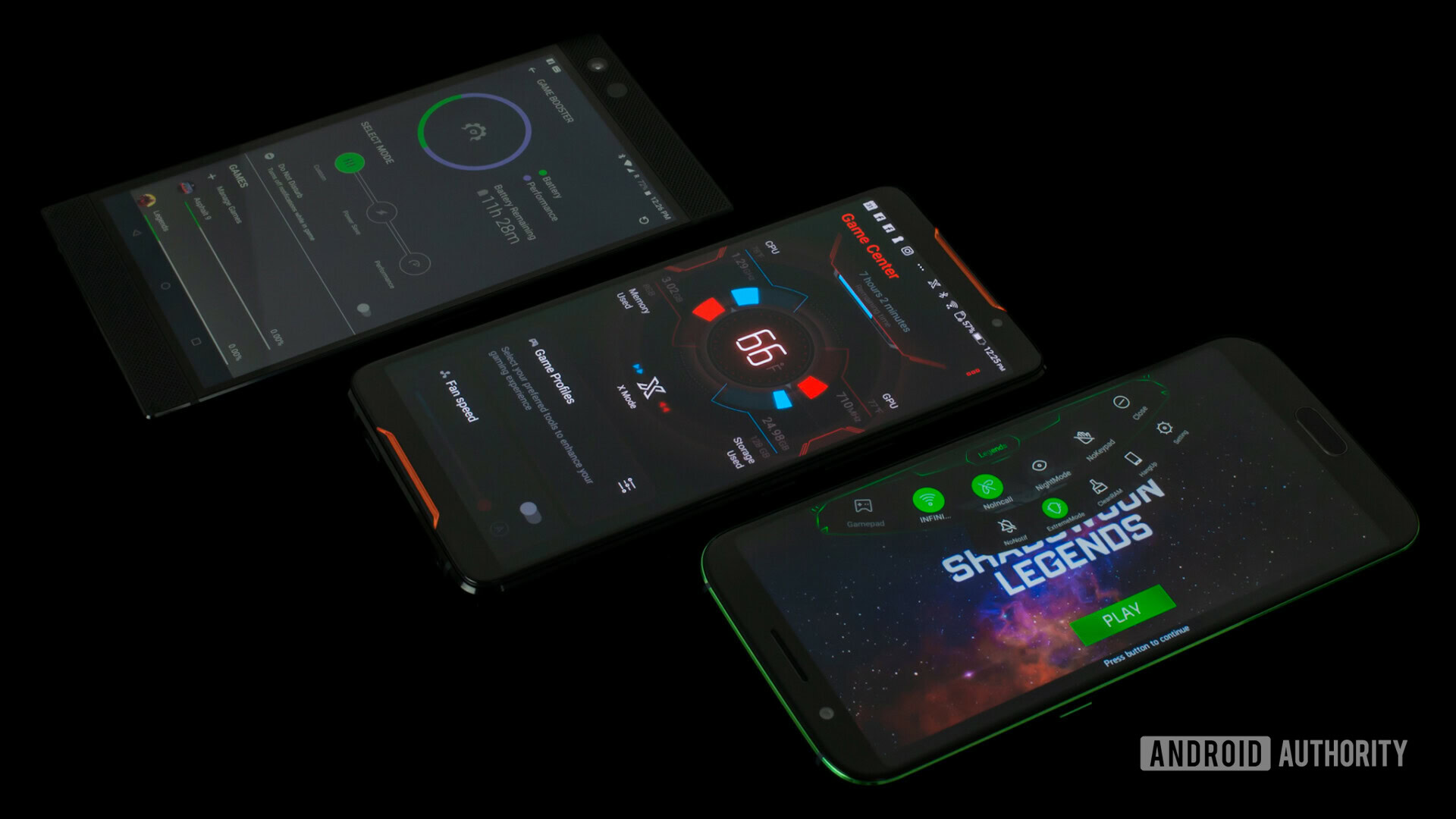
ASUS ROG Phone
The ASUS ROG Phone features an app called Game Center. Access it and you will find visuals specifying the state of your phone. This includes CPU, GPU, RAM, and storage usage. You can also look at the temperature of the phone or the CPU, specifically. It also features X Mode, which gives the phone more power, and therefore uses more energy.
Game Center also features Game Profiles, which allows for performance customization based on each game. The user can do things like turn on X Mode automatically, set memory cleaning habits, set a maximum CPU frequency, set the refresh rate (to 60Hz or 90Hz), turn on anti-aliasing, or deactivate alerts.
Scroll down on the Game Center app and you will also find fan speed and Aura lighting settings. Upon accessing the menu button you will also see options for setting up Game Genie, AirTriggers, and more.
By the way, all these settings can be accessed from games by pulling out the navigation menu and hitting the gamepad icon. An overlay will slide out and offer all needed customization options. You can also toggle X Mode on from the notification center.
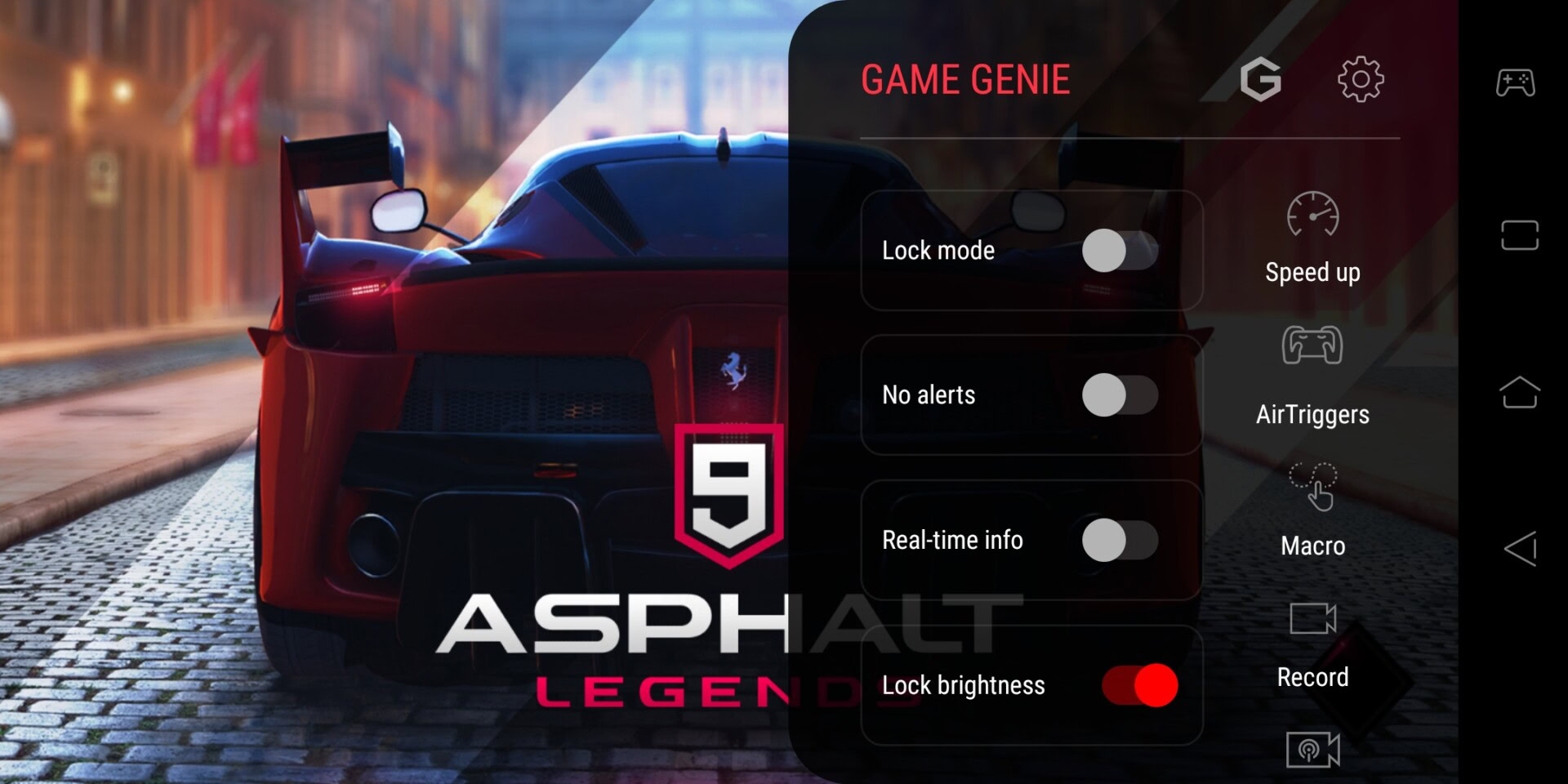
Razer Phone 2
The Razer Phone 2 has Game Booster, accessible through the Razer Cortex or Settings apps. This app gives you access to battery and performance details. You can also switch between Power Save, Performance, or Custom modes.
In Custom you can go into specific games and choose how you would like the phone to behave upon launching them. Available options include changing CPU frequency, screen resolution, refresh rate (up to 120Hz), and anti-aliasing.
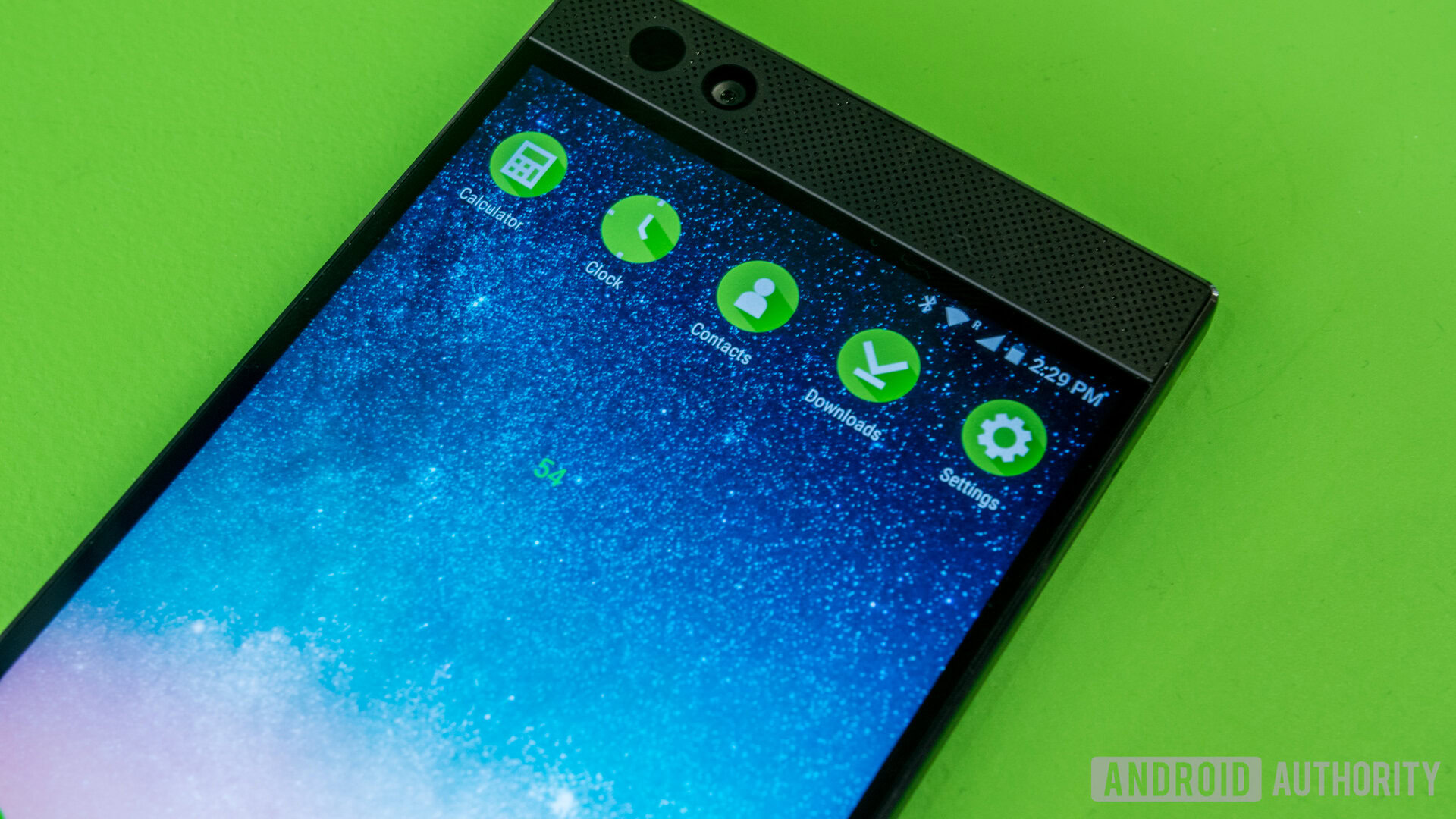
This phone also supports the highest refresh rate out of the three. It may be the one to get if that is an important factor to you.
One downside is you can’t access these settings without leaving your game, though. The other two phones allow for accessing performance options straight from any gaming app.
Xiaomi Black Shark
Xiaomi’s Game Dock is likely the simplest of the three options featured in this post. For starters, performance options can’t be controlled directly from the Settings menu or missing app. It needs to be managed from the Game Dock, which you can pull out once you’re in a game.
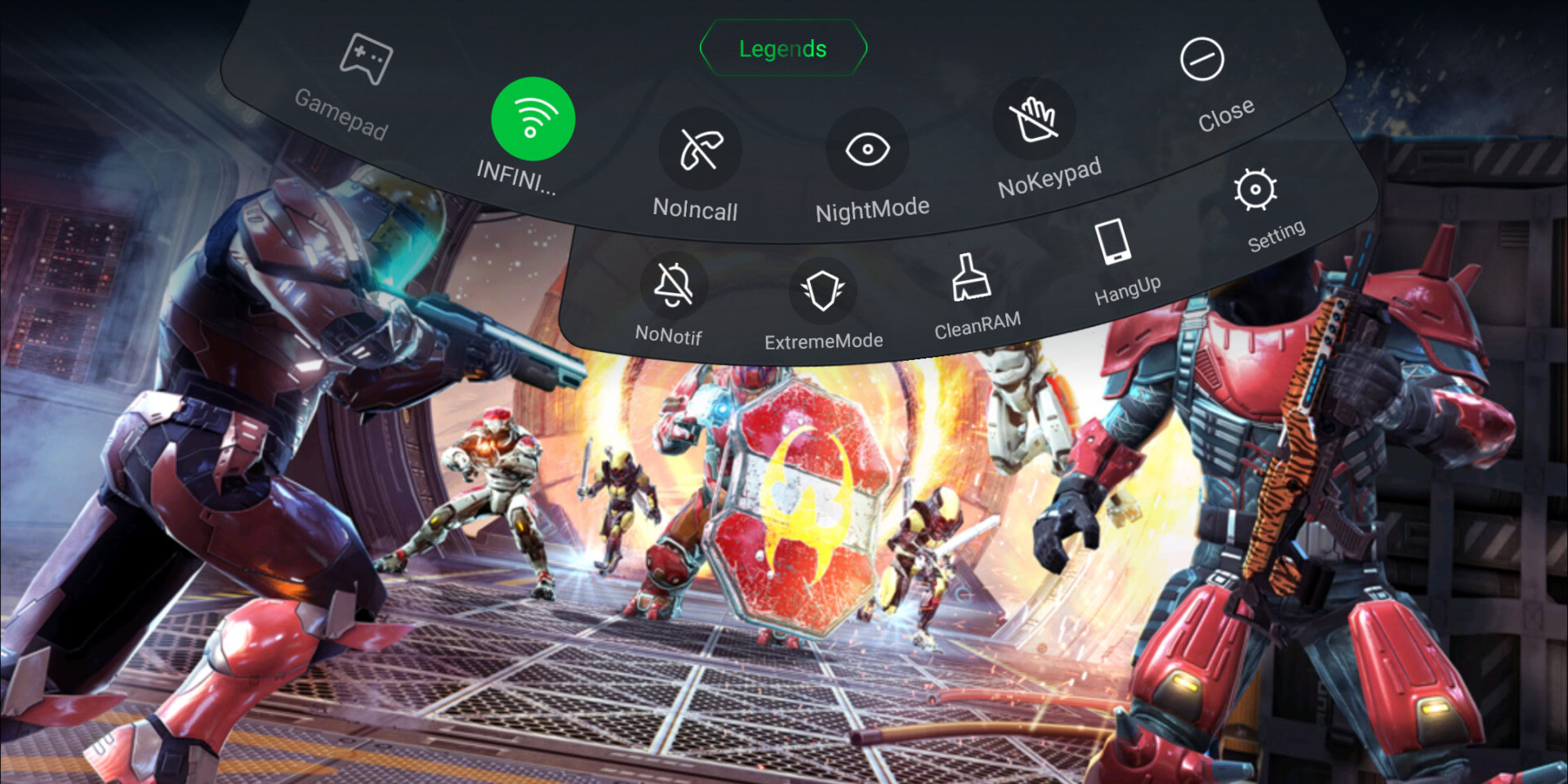
The Game Dock can be retrieved by sliding your finger down the fingerprint scanner (when in landscape mode). This will feature the following settings: Gamepad, Wi-Fi, NoIncall, NightMode, NoKeypad, and More. Hit the More button and you will find the more specialized gaming options, where you can turn on ExtremeMode, clean the RAM, hang up a call, or turn off notifications.
We get no details on CPU frequency and other specific. Like the ROG phone, this phone is limited to a 60Hz frame rate.
In addition, Xiaomi has created a focused ecosystem that clears the clutter and lets you focus on the game. It’s called Shark Space and you can enable it by toggling the hardware button on the left side of the device. When toggled on, you will be taken to an interface with a list of your games.
From Shark Space you can also manipulate controller settings, look at gaming stats, and turn Observer Mode on, which disables cellular function, leaving only data enabled.
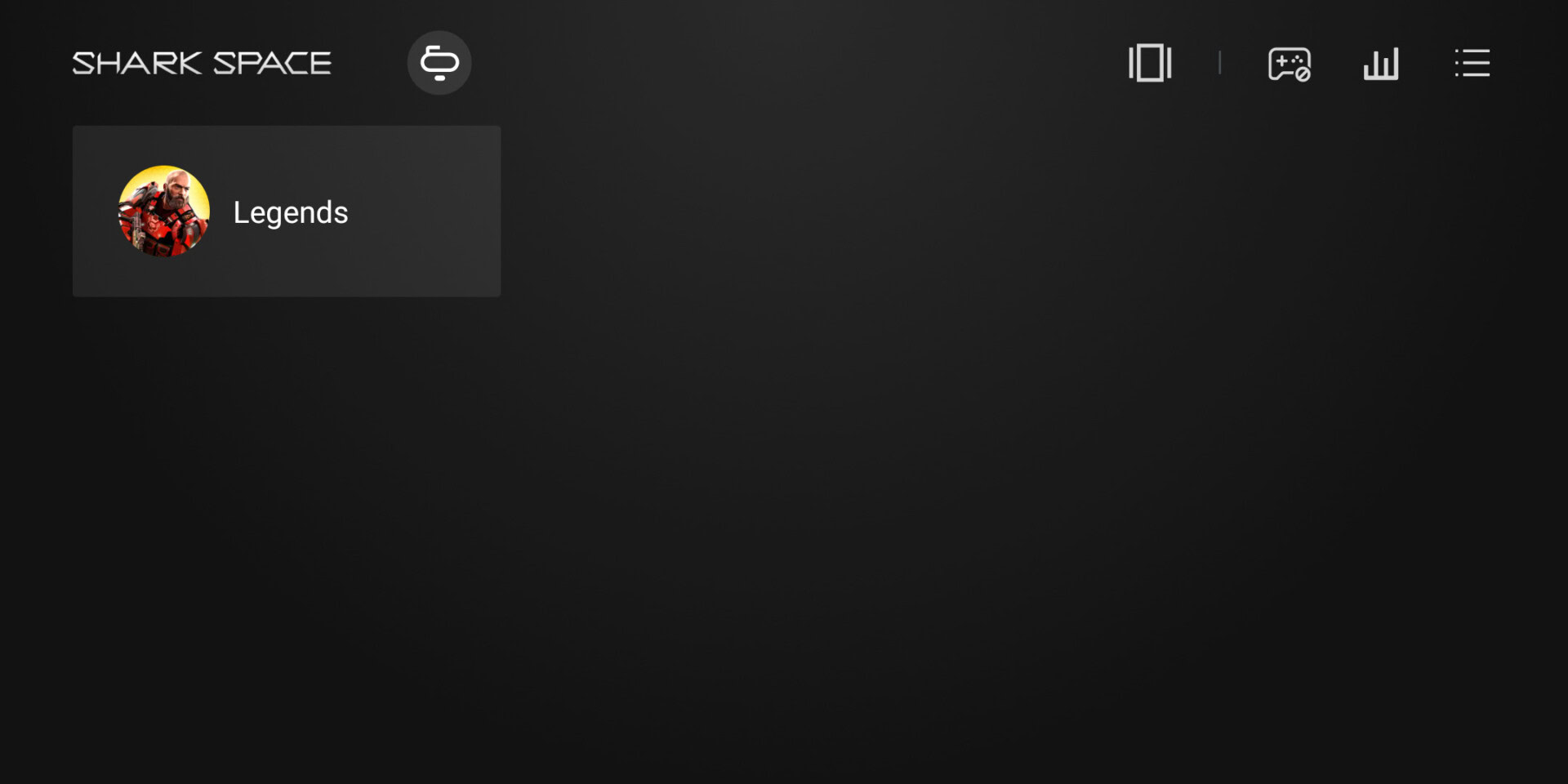
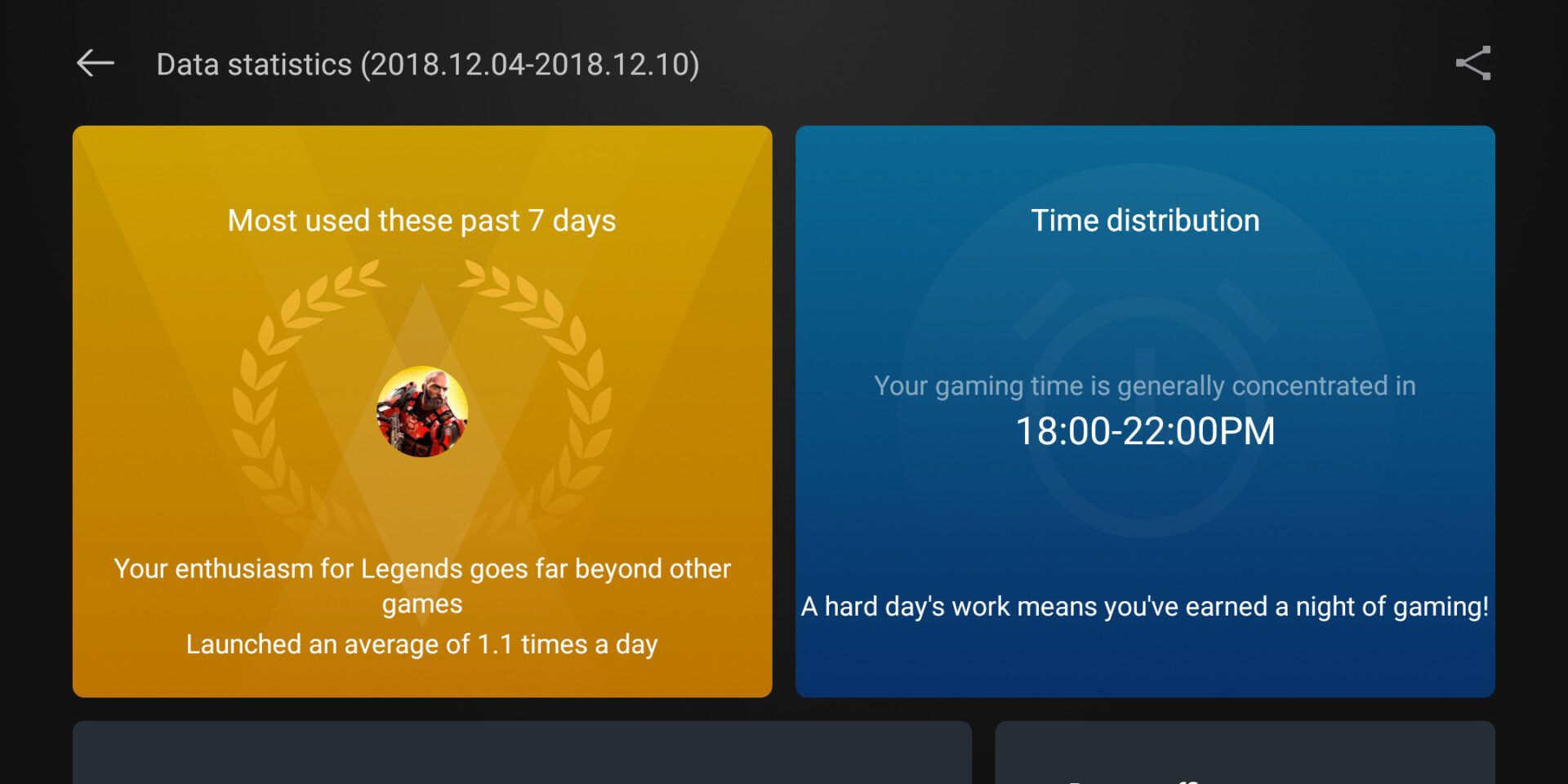
Winner
Performance: Razer Phone 2
The Razer Phone 2 may not be as fancy, but it kills the other guys in performance. Games lagged the least and loaded faster here than the others. Not to mention that sweet 120Hz refresh rate, which makes games look amazingly smooth.
The Razer Phone 2 may not be as fancy, but it outperforms its competitors.Edgar Cervantes
One could argue the lack of assistive cooling could hinder it once it gets hot, and it gets noticeably more glitchy when that happens, but I actually felt it kept cooler than the Xiaomi Black Shark.
Customization: ASUS ROG Phone
The ASUS ROG Phone created an amazing app for improving the game experience. It is full of fun visuals, keeps track of all component statuses, and makes it simple to customize any gaming options. It’s also easily accessible and the in-game overlay keeps your game uninterrupted.
Also read: Best of Android 2018: The best gaming phone
Display
We found the Razer Phone 2 to tout the best screen, both subjectively and objectively. For starters, it has the highest resolution at 2560 x 1440, while the ASUS ROG Phone and Xiaomi Black Shark stay behind at 2160 x 1080. And because the screen is a bit smaller at 5.72 inches (vs 6.0 and 5.99 inches), pixel density is also higher at 513PPI.
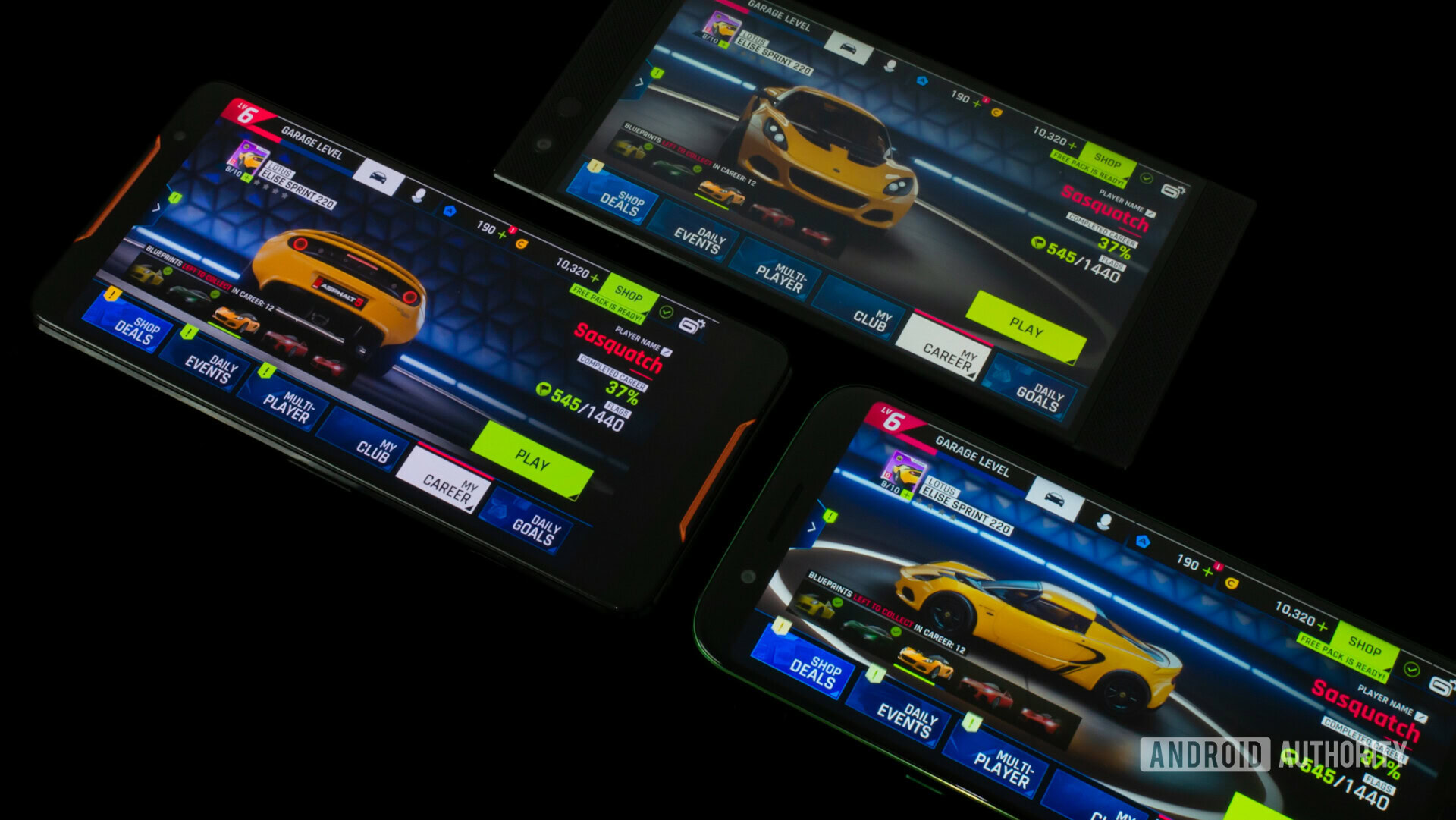
The ASUS ROG Phone has the saturated colors and deep blacks AMOLED has to offer, and the IPS LCD panel on the Xiaomi Black Shark is good, but Razer’s IGZO IPS LCD screen proved to be the most accurate of the three in our testing. Now, accuracy isn’t always synonymous with quality. Some of you like those over-saturated colors and deep blacks.
Of course, we must also emphasize that 120Hz refresh rate takes gaming to a whole other level of smoothness.
Winner: Razer Phone 2
Audio
We can show you stats on decibels and frequencies, but ultimately audio is harder to measure. These are actually all great speakers and the statistical differences are minimal. What’s important is how well each device’s sound hooks you into the experience.
The ASUS ROG Phone gets the loudest and sounds very full, but I would say the Razer Phone 2 does sound clearer.Edgar Cervantes
Sound has to be immersive, loud, and clear. My first complaint is with the Xiaomi Black Shark, which offers dual speakers but one of them is not front-facing. This is mostly a problem because it’s easy to cover when playing in landscape mode, an orientation nearly every game uses. This results in random muffled sound.
The ASUS ROG Phone gets the loudest and sounds very full, but I would say the Razer Phone 2 sounds clearer. Maybe those huge bezels helped.
Winner: Razer Phone 2
Battery life
All three devices sport a hefty 4,000mAh battery and similar specs, but that doesn’t mean battery life is necessarily similar. They all use different cooling systems, have different screens, and feature different over-clocking modes.
The Xiaomi Black Shark can outlast both the ASUS ROG Phone and the Razer Phone 2.Edgar Cervantes
In our objective testing we found the Xiaomi Black Shark outlasts both the ASUS ROG Phone and the Razer Phone 2. When continuously loading websites, Xiaomi’s handset lasted 820 minutes, while the ASUS and Razer devices lived for 590 and 649 minutes, respectively.
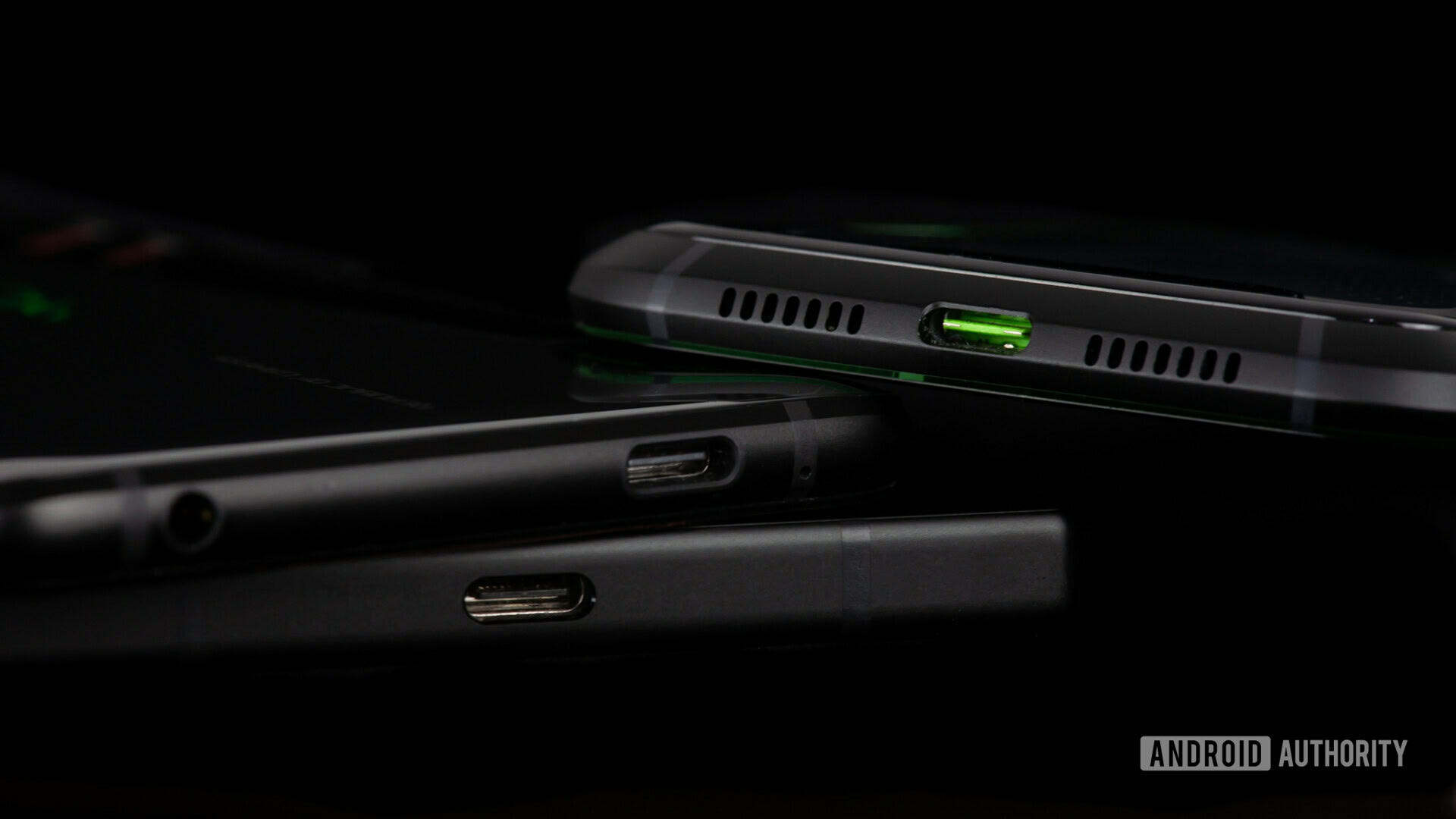
The ASUS ROG Phone gets an advantage if you buy that TwinView dock, though. The gaming accessory costs $399.99, and offers an additional 6,000mAh battery pack on top of an improved gaming experience.
Winner: Xiaomi Black Shark (ASUS ROG Phone if you buy the TwinView dock)
Bang vs buck
The Xiaomi Black Shark may fall behind in most sections within this review, but it beats its competition by far when it comes to the bang you get for your buck. The Xiaomi Black Shark costs 2,999 Yuan (~$479) for the 6GB RAM and 64GB internal storage model, or 3,499 Yuan (around $559) for the 8GB RAM and 128GB version.
Meanwhile, the ASUS ROG Phone starts at $899 for the 128GB version, and the price goes up to $1,099 when you upgrade to the 512GB iteration. The price can go well over $2,000 if you get all its accessories, too.
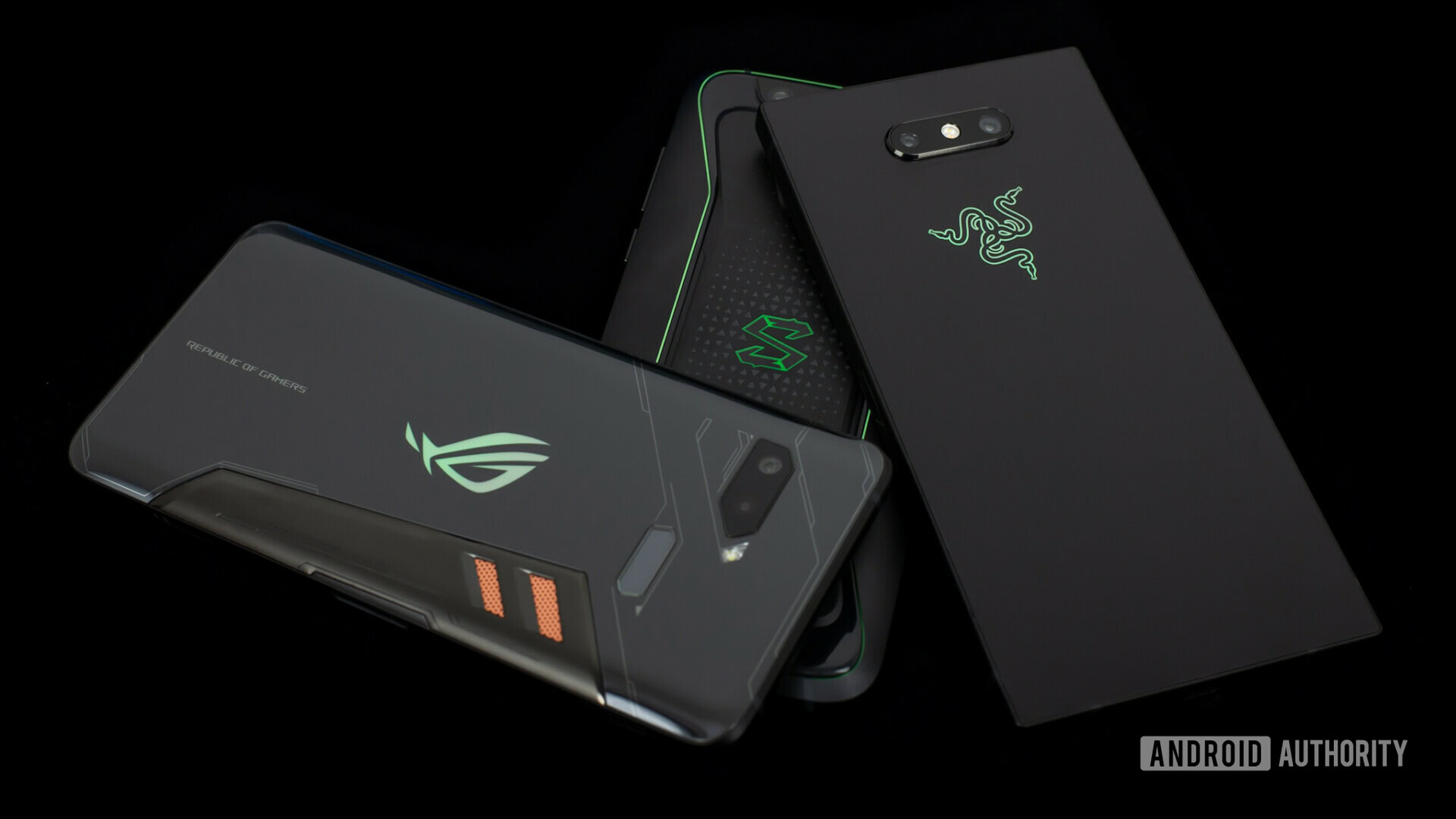
The Razer Phone goes for $799.99. Which is better than ASUS’ offer, but still significantly more expensive than Xiaomi’s first gaming device.
You simply can't beat a $479 price for a device with as much power as the Xiaomi Black Shark.Edgar Cervantes
You simply can’t beat a $479 price for a device with as much power as the Xiaomi Black Shark. Sure it isn’t the best, but you get more for your cash. There is one caveat, though. The Xiaomi Black Shark isn’t as widely available as the other two contenders. In the U.S. your only chance at getting a unit would be importing it, and good luck finding it. Xiaomi devices tend to go out of stock rather quickly.
Winner: Xiaomi Black Shark
Fatality!
If we add a point for every section a device won, these would be the results:
- ASUS ROG Phone: 4
- Razer Phone 2: 3
- Xiaomi Black Shark: 3
Things are never that simple, though. While the ASUS ROG Phone is the clear winner overall, that just means it was able to best the others in more categories, some of which might not be as important to you.
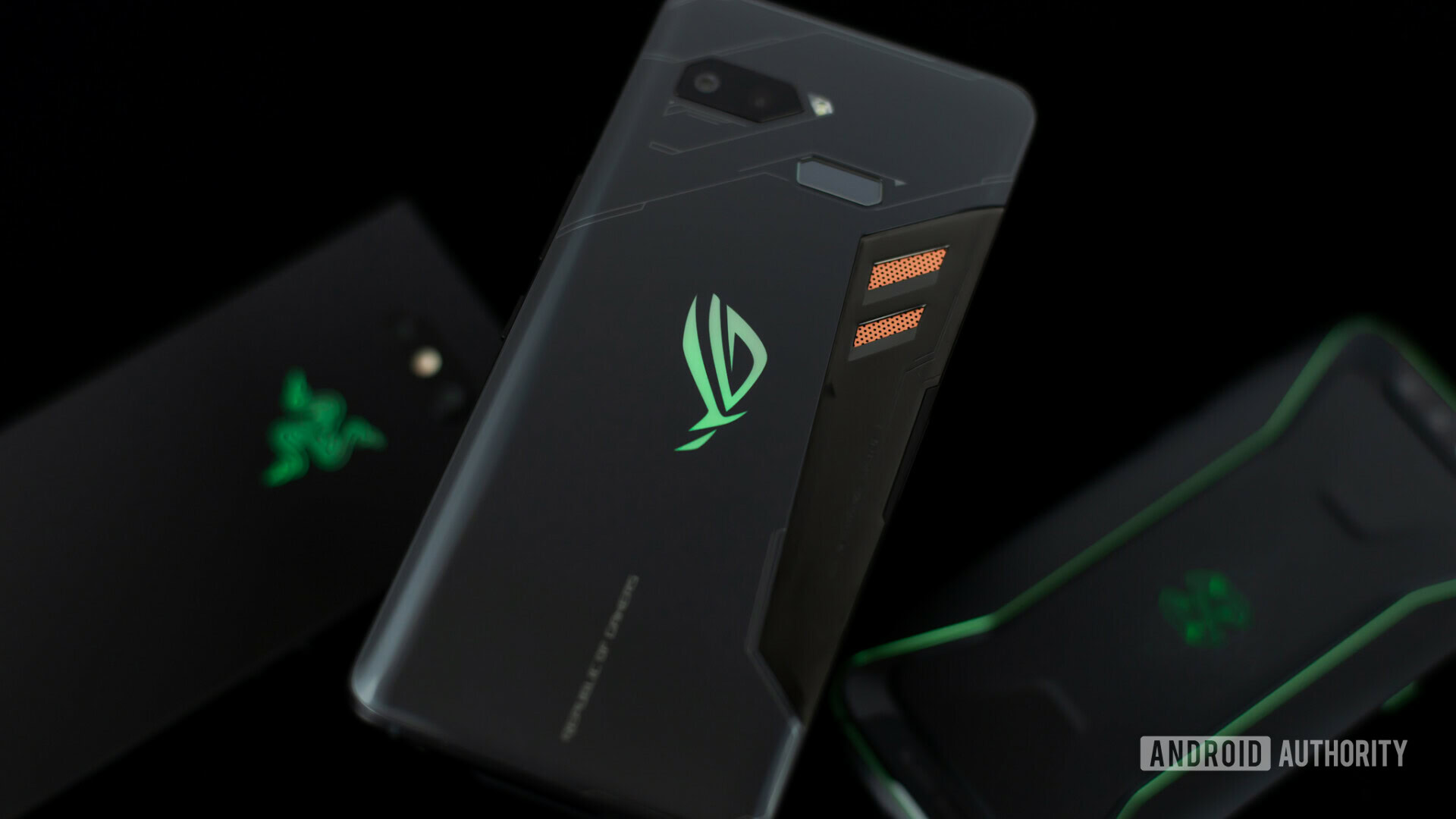
The Xiaomi Black Shark will keep your wallet healthy, and features great build quality (if you can get a hold of one). Razer has the best performance, display, and audio quality, offering a great all around experience. Meanwhile, the ASUS ROG Phone will give you that competitive edge with extensive software, better cooling, and a plethora of accessories that could really change the game.